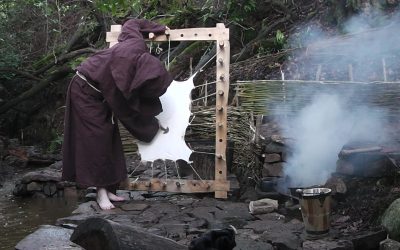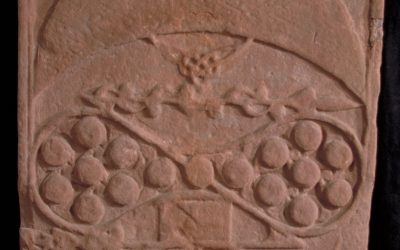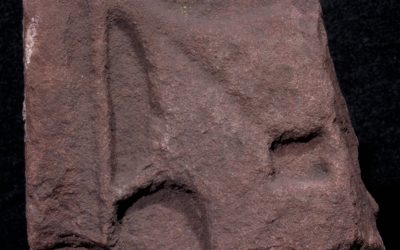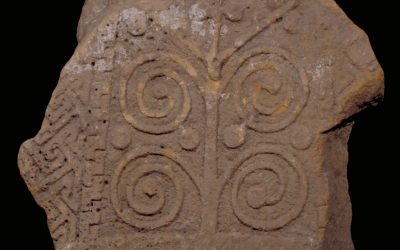PICTISH STONES
PERMANENT DISPLAY
Rosemarkie’s Pictish stones were part of the monastic settlement that was flourishing by 700AD
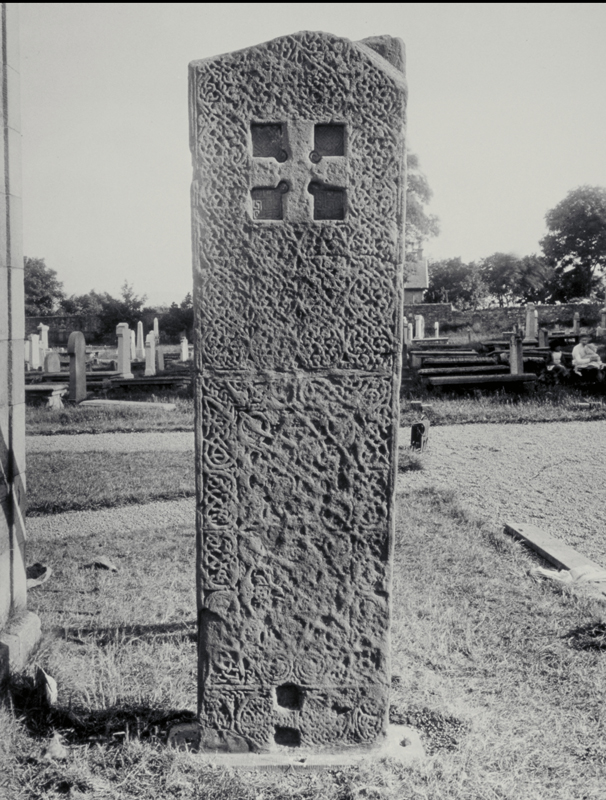
The Rosemarkie Stone previously located in the village churchyard.
The museum’s superb Pictish sculpted stones give an idea of the importance of Rosemarkie 1,250 years ago. Through their fabulous art and design the stones tell stories of the power of kings, church and saints. They speak of an early Christian monastery that is hidden under the buildings on both sides of the High Street and down to the beach.
The highly unusual cross-slab with its intense designs stands 2.6m high. It probably stood at an entrance to the monastic enclosure, with its church, monk’s cells and burial ground. Most of the other sculpted slabs found here were originally inside the stone church. A few show fantastic beasts or men. Some feature a lightly decorated Christian cross. Others are covered in interlace, key pattern and spirals – the designs that fascinated George Bain.
The finest sculpted stones are parts of an altar, what could be the tomb of a bishop, and a shrine for relics of a saint. But which saint? There are histories that connect Rosemarkie with St Curadan, St Moluag and, in medieval times, St Boniface. Links to the early saints must have ensured the life of the monastery, politically and as a place of pilgrimage. Rosemarkie became the organisational centre of religion in Ross – its church and decorated stones speaking of centuries of activity here.
If you have any queries or would like to visit the collections that aren’t on display contact curator@groamhouse.org.uk
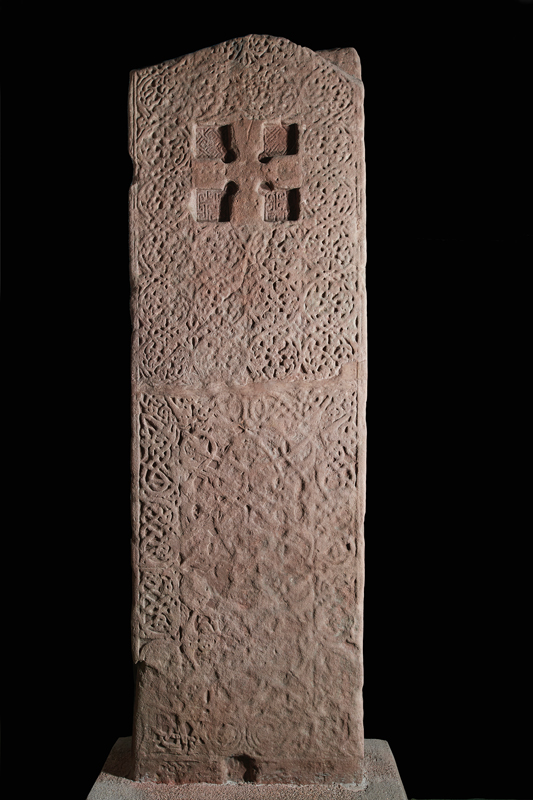
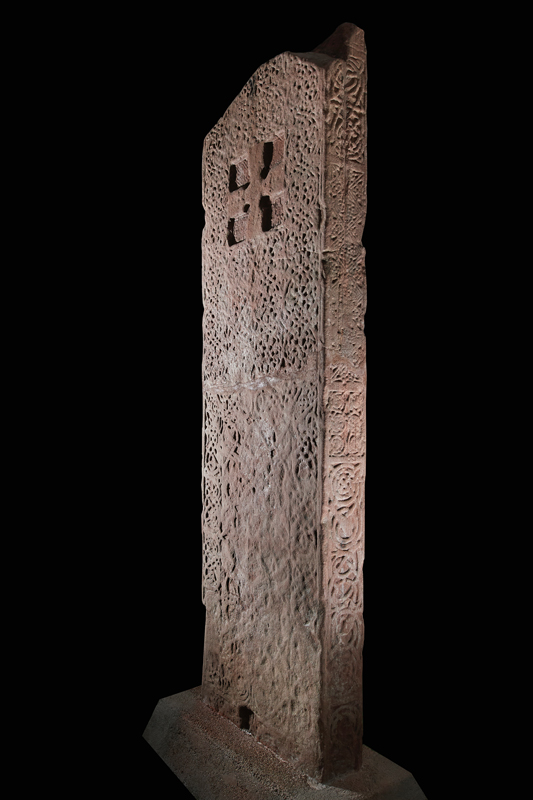
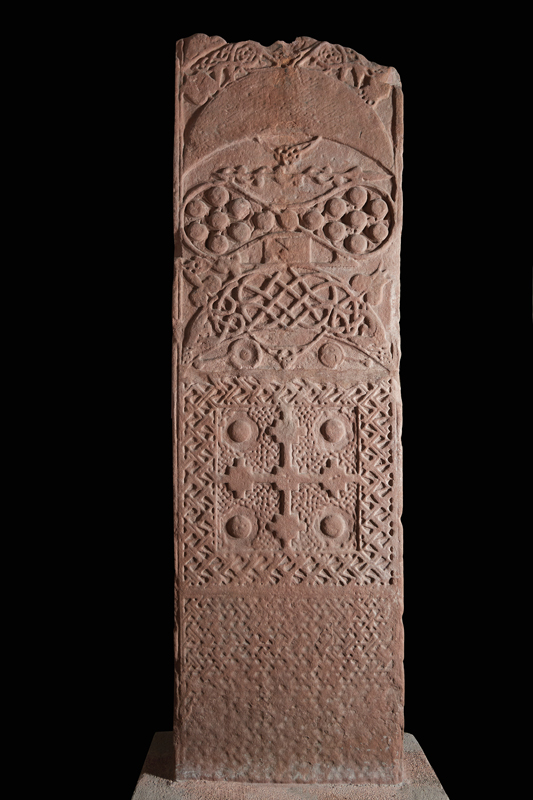
EXHIBITION TOUR: The Picts in Rosemarkie
See our new interpretation of our display of carved Pictish stones for 2020
Highland Council's Historic Environment Records
In 2021, the Groam House Museum and the Highland Council’s Historic Environment Record (HER) team undertook a project to comprehensively update the records of all carved stones in the GHM collection on the Highland ‘HER’, and to enable easy access to this information by all interested parties.*
The Highland ‘HER’ contains over 100,000 records detailing the heritage of the Highland Council area from the earliest human activity to the Cold War. New information is being added to the site all the time. https://her.highland.gov.uk/
The unique collection of Pictish and medieval sculpture in the museum has been discovered over the last two centuries in the demolished medieval church in Rosemarkie, the surrounding graveyard and in Rosemarkie and Fortrose domestic garden rockeries. There is also a medieval cross base and a cross arm fragment from Newhall Point, Balblair in the collection.
Each individual ‘HER’ record contains an up to date colour photograph of each carved stone, the chronological record of its provenance and a link to its Historic Environment Scotland (HES) Canmore record. A summary of each record and a link to its entry in the HER site can be downloaded as a PDF.
It is hoped that the results of this project will lead to an increased interest in the ‘GHM’ unique collection of Pictish and medieval sculpture and the possibility of more ‘reused’ fragments of carved stones being discovered in local gardens and walls.
*The GHM/HER project 2021 was undertaken by;
- Tim Blackie, trustee/committee member of the North of Scotland Archaeological Society (NoSAS), Highland ‘Historic Environment Record’ volunteer and local Groam House Museum member
- Jill Harden, historic environment and museum specialist and collections volunteer at Groam House Museum
Introducing “At Home with the Picts: A Crafted Legacy” – Groam House Museum’s Podcast!
The first episode launches on Saturday 5th April at...
ONLINE LECTURE
Making The Book Of Kells with Thomas Keyes,
Watch the recording of the lecture.
ONLINE LECTURE
Can Iona shed light on Rosemarkie? with Gilbert Markus.
Watch the recording of the lecture.
ONLINE LECTURE | The Conan Stone
with John Borland
Available to watch online.
LISTEN | PICTISH CROSS PODCAST
Groam House Museum volunteers Jill Harden and Alastair...
UPDATING GROAM HOUSE MUSEUM AND HIGHLAND PICTISH RECORDS
An article by Tim Blackie
DISCOVER: A FANTASTIC FIND
People in Rosemarkie should always keep their eyes open …
A saint’s shrine
Who would think that this sculpted stone was probably a focus for pilgrimage 1000 years ago
A masterpiece
Some Pictish sculpture looks deceptively simple …



